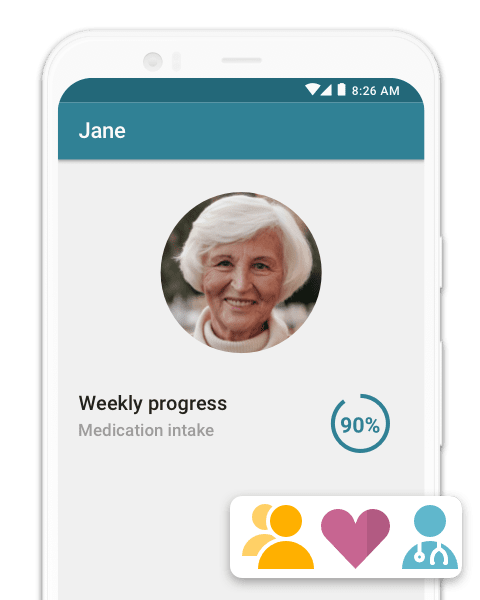Osteoarthritis (OA) and rheumatoid arthritis (RA) are often confused. They don’t only belong to the same umbrella disease of ‘arthritis’, but also have similar basic symptoms, level of prevalence, and risk factors. The two diseases are, however, not the same. In this article, we’ll examine the similarities and differences between OA and RA, including what causes them as well as their symptoms and treatment.
What is arthritis?
OA and RA have one thing in common – they are both arthritis. Arthritis is a general term that is used to describe any disorder that affects joints. There are more than 100 types of arthritis and its related conditions, two of the most common are OA and RA. The typical symptoms of arthritis include inflammation in and around the joints, warm/red skin over the affected joints, as well as pain, tenderness, and stiffness of joints. Consequently, arthritis often limits the range of motion of the affected joints.
Now we’ve covered the basic information about arthritis, let’s compare OA and RA.
1. Degenerative vs systemic disease
Although both diseases attack and damage joints, what prompts the disorder, and the subsequent effects are different.
OA is a degenerative disease and typically originates from a single joint. It occurs when cartilage (flexible tissue in joints that connect and cushions your bones) wears out. When this happens, the joints no longer have padding they need to move and extend the way they should. Over time, the joints will rub against each other, and eventually cause pain as the bones become deteriorated. Because of this, OA typically develops gradually later in life and intermittently over several months or years. OA is also popularly known as the ‘wear-and-tear’ arthritis because it results from natural aging and years of wear on the joints.
RA, on the other hand, is an auto-immune and systemic disease. RA happens when the immune system doesn’t work properly. Instead of attacking foreign invaders like bacteria and viruses, the immune system of RA patients considers the healthy joints as the “enemies” and attacks them. Furthermore, RA often develops quicker than OA. The joint stiffness can worsen over several months or even weeks and usually occurs in multiple areas of the body at the same time (as opposed to affecting a single area like OA). The most commonly affected joints are the hands, elbows, knees, ankles, wrists, and feet. In some cases, joint pain isn’t always the initial sign of RA. It may begin with a flu-like symptom (fever and fatigue with minor joint aches) in which the joint aches are persistent and get worse quickly.
2. Risk factors
OA and RA share several risk factors, although they are both more prevalent in women than men. OA is more common to occur in older people, whereas RA can develop at any age. The risk to get RA is also higher if you have a family member who has them.
Additionally, you’re more likely to develop OA if you have joint deformities, diabetes, gout, or have traumatic injuries to your joints. On contrary, what can cause RA isn’t as clear as in OA. Some evidence suggests that smoking may increase the chance of getting RA.
3. Symptoms: location and type of stiffness
Since both OA and RA affect joints, they both have the same basic symptoms, such as stiffness, pain, and weakness of the affected muscles and joints. There are, however, some symptoms that can distinguish OA from RA.
As mentioned before, OA is not a systemic disease. Thus, the joint pain, stiffness, and swelling commonly occur in the affected joints only. Other common symptoms of OA include:
- joint damage is common to occur in the hand, fingers, knees, spine, and hips
- symptoms don’t often occur symmetrically, for example, the pain may be felt in the left and right hand, but one side is worse
- morning stiffness with an increased joint pain throughout the day
- cracking and popping of the joints
- bone spurs/bony growths (hard little lumps around joints)
Unlike OA, RA is a systemic disease which can affect not only the damage joints but also other vital systems, such as the respiratory and cardiovascular system. If these two key systems are under attack, the neurological, physiological, and physical functions of an individual can be off track and the overall system won’t work properly. Other common symptoms of RA include:
- inflammation typically begins in the smaller joints (such as finger joints) before developing in larger joints (knees, shoulders, and ankles)
- often attack the joints symmetrically
- morning stiffness of the joints
- redness and warmth in the joints
- low grade fever
- weight loss
4. Diagnosis
It’s important to determine the type of arthritis a patient has as the treatment of OA and RA are different.
Generally, OA is diagnosed through physical examination, assessment of past medical conditions, and a series of tests. Common tests used to diagnose OA include:
- Blood test – there is no specific blood test for the diagnosis of OA. However, a blood test is still conducted to rule out other causes of joint pain, such as RA.
- X-rays – X-ray test can’t show the cartilage, but it can reveal if the cartilage has deteriorated. X-ray is also useful to exclude other causes of pain in a particular joint and help to decide if surgical intervention is needed.
- Magnetic resonance imaging (MRI) – MRI test isn’t a mandatory test to diagnose OA, but it can provide detailed images of cartilage, bone, and soft tissues.
- Arthroscopy – Arthroscopy is a surgical technique whereby a doctor inserts a viewing tube into the joint space. This technique can detect and repair the abnormalities of and damage to the cartilage and ligaments.
- Joint fluid analysis (arthrocentesis) – Arthrocentesis is conducted by inserting a needle into the affected joints to remove the joint fluid. This fluid is later used to determine whether the pain is caused by gout or infection rather than OA. Arthrocentesis is usually combined with an injection of corticosteroids to help relieve pain, swelling, and inflammation of the damaged joints.
RA is also diagnosed through blood tests, x-rays, and physical examination, along with these tests:
- C-reactive protein (CRP) – measures the c-reactive proteins level that is produced as a response to inflammation in the body
- Anti-cyclic citrullinated peptide (anti-CCP) – if CCP antibodies are found in the blood, it can be a sign of RA
- Rheumatoid factor (RF) – measures levels of RF, an antibody often present when an individual has RA
- Erythrocyte sedimentation rate (ESR) – to indicate whether an individual experience inflammation
5. Treatment
Unfortunately, there is no cure for either disease. However, with the right treatments and therapies, the unpleasant symptoms of OA and RA can be managed. Based on the individual diagnosis, the doctor usually prescribes a patient with a combination of several medications and may recommend them to join physical therapy as well.
Treatment for both OA and RA
Medications
- Nonsteroidal anti-inflammatory drugs (NSAIDs) – such as over-the-counter ibuprofen (Advil and Motrin IB) and prescription-based celecoxib (Celebrex).
- Corticosteroids – such as prednisone (Deltasone), hydrocortisone (Cortef), and methylprednisolone (Medrol).
- Counterirritants – usually contain ingredients such as capsaicin, menthol, and lidocaine. These medications can take the focus away from the joint pain by, for example, giving a cold or numbing feeling to the irritated areas.
Non-drug therapies
- Physical therapies – include strengthening, range-of-motion, aerobic/cardio, and balance exercises.
- Surgery – such as realigning bones/arthrodesis (removing or adding a wedge of bone), joint replacement (replacing the damaged joint with artificial joint/prosthesis), and synovectomy (removing the inflamed synovial tissue around the joint).
Specific treatment for OA
- Intra-articular injections – or also known as lubrication injections, can fill in the missing padding that is provided by the cartilage before it degenerates. Some of the drugs of this group include hyaluronic acid, Botox, and platelet-rich plasma (PRP).
Specific treatment for RA
- Disease modifying medications (DMARDs) – such as methotrexate (Trexall), hydroxychloroquine (Plaquenil), and leflunomide (Arava).
- Biological disease modifying medications (bDMARDs) – such as abatacept (Orencia), adalimumab (Humira), and anakinra (Kineret)
Conclusion
Even though OA and RA are part of the arthritis disease, the two illnesses have different root causes. RA is caused by an autoimmune response and is a systemic disease. The joint damage in RA typically occurs symmetrically and can attack other vital systems of the body. OA, on the other hand, is a degenerative disease that is caused by years of natural wear and tear. The joint pain doesn’t often occur symmetrically but may include cracking/popping of the joints.
If you experience some of the symptoms mentioned before, talk with your doctor to get a proper diagnosis. Keep in mind that with early detection and proper treatment, people with OA or RA can still lead a full and active life for as long as possible.
Here are some articles that we think you might be interested in:



